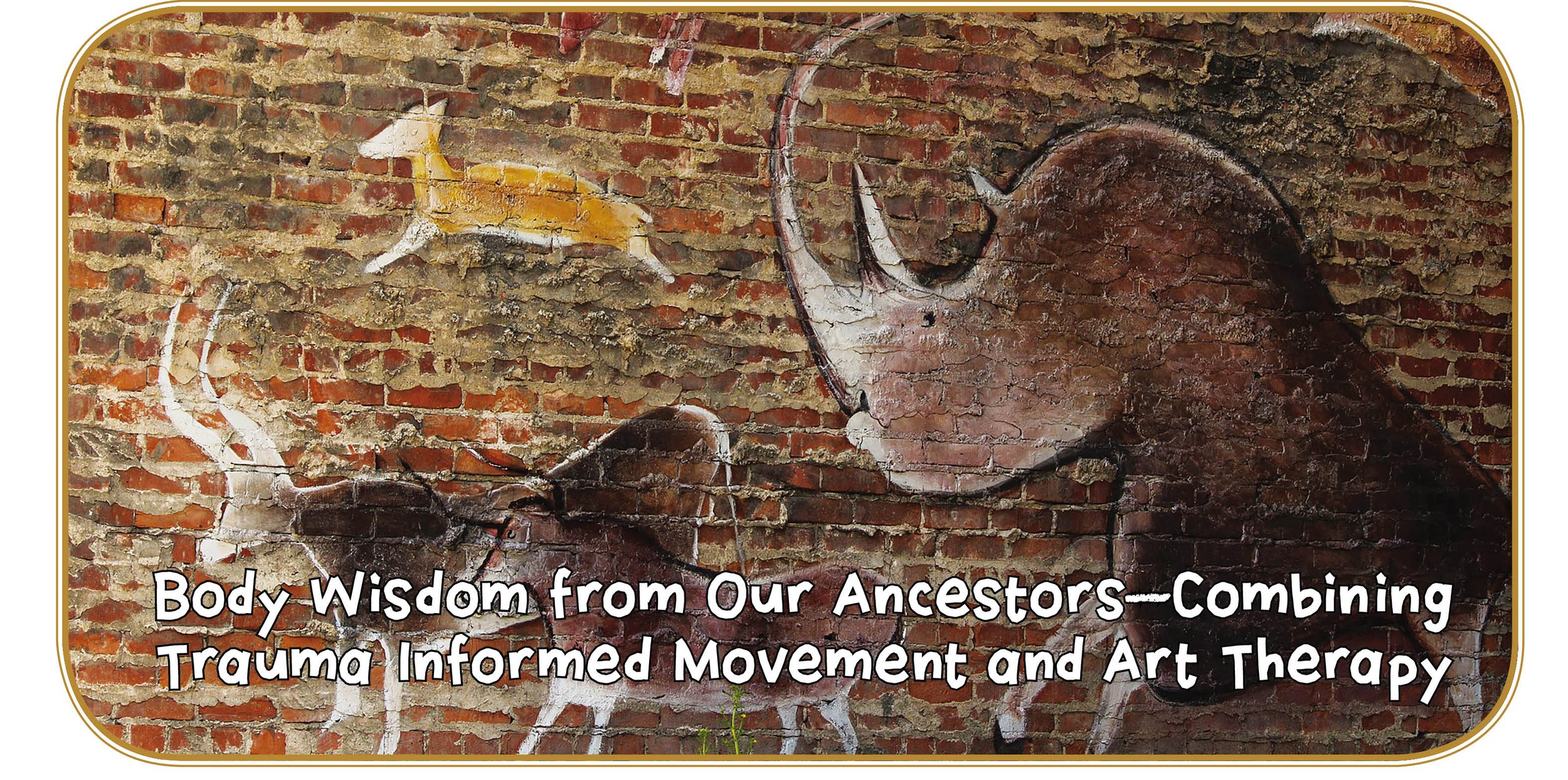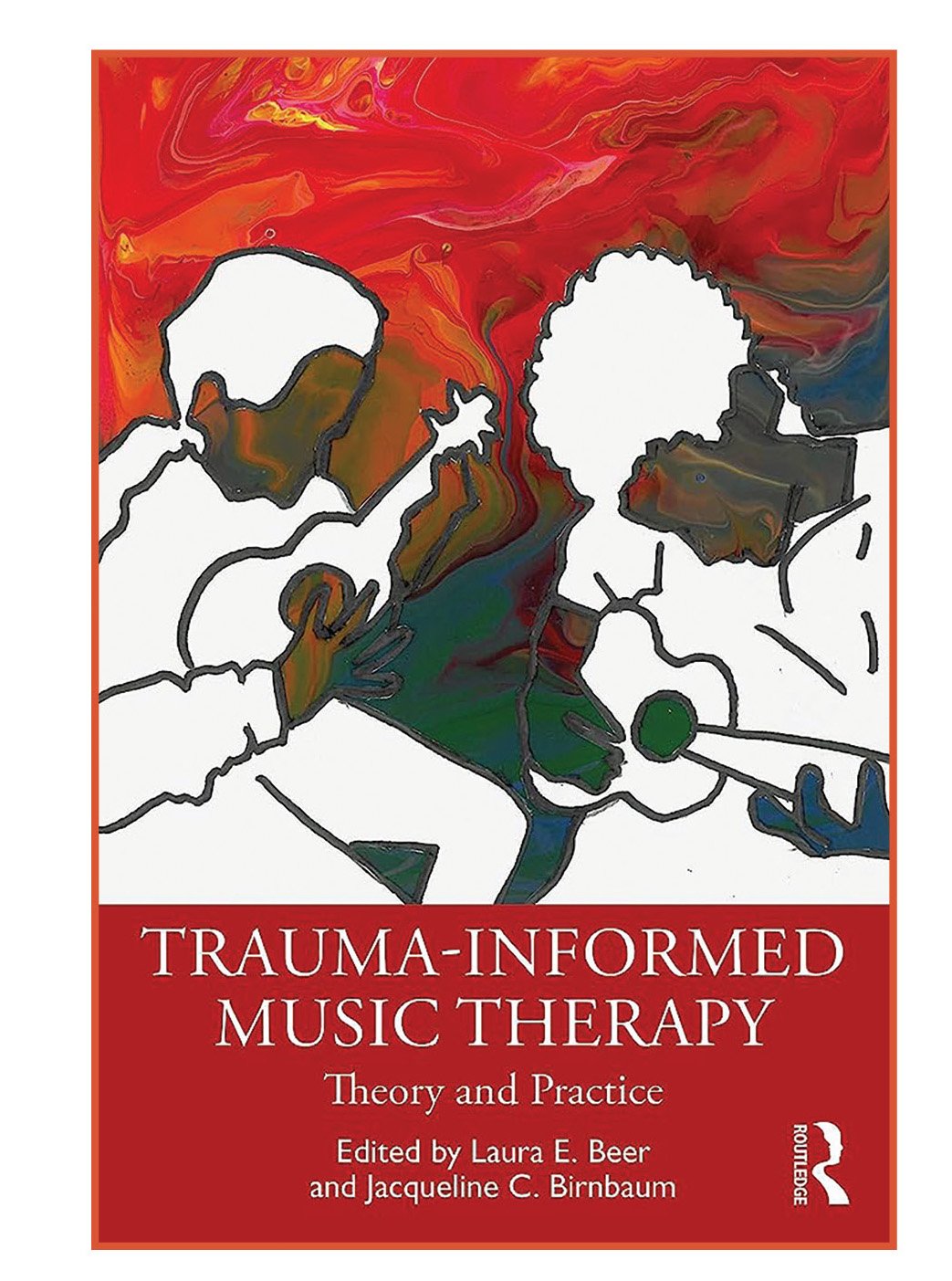By Kate Roos
Awareness of the universal impacts of trauma on the mind, body, and society—large and small—has been growing over the past few decades. Fortunately, this awareness has promoted understanding of what type of approaches might help support healing as well. Some of these approaches were known by our earliest ancestors, including creating images, movement, dance, music, and singing. Today we call these expressive arts therapies.
As a registered art therapist for over 30 years, the beauty of art therapy to me has always been how available and accessible it is to anyone, regardless of ability or experience. Consciously or not, we are always editing the stories we tell about ourselves to align with our current experience. However, if we have had past traumatic experiences, or we were very young, our stories might be fragmented or beyond words, held as implicit memory, cognitively unavailable to us. Implicit memory may be the source for creating expressive and potentially healing artwork. In my early days as an art therapist, I was repeatedly awed by my clients’ abilities to make unexpected connections and discoveries about themselves during the course of our work together, even though the expressive power of art is what drew me to becoming an art therapist in the first place.
I have also been a yoga student for over 25 years, most often practicing Iyengar Yoga at Yoga Focus in Ann Arbor. In the words of Mary Dunn, who was an Ann Arbor native and founded the Iyengar Yoga National Association of the United States, “People have incorrectly pigeonholed Iyengar Yoga into ‘alignment, technique, props’ rather than ‘learning, experiencing, integrating’—which I think are the real words.” In these words, I heard a prescription for healing.
Learning how to bring our bodies into alignment requires paying attention to where our bodies are in space, muscle tension, and inner felt sensations. Eventually, I would come to understand that implicit memories are held in our bodies and inform our posture and how we feel—or don’t feel—our body. Implicit memory might be accessed in movement which dance therapists have always known. To me, this seemed similar to how implicit memory might be expressed in art therapy. Practicing yoga develops neural connections with the cognitive mind and the felt sensations in the body which may attune with our bodies’ natural healing abilities. Could this be what is happening with creative expression in art therapy?
My interest in learning and developing further awareness of felt experience to inform inner movement and posture during yoga practice and, more importantly, in my daily life, eventually led me to study Mindfulness Based Stress Reduction training developed by Jon Kabat-Zinn. Again, my attention was brought into my body, and my breathing. During body scan meditations—which in the beginning were my least favorite meditation—I slowly began to discover that by paying attention to places in my body that were tight or painful, while breathing, the tightness or pain would ease. Following these breadcrumbs down my personal path early in the Covid pandemic, eventually led me to learning about trauma sensitive yoga and earning certification as a Trauma Center Trauma Sensitive Yoga (TCTSY) Facilitator.
Our current understanding of trauma is that it is a response of our brains and bodies to an experience or event that is deeply disturbing or distressing, and that it overwhelms a person’s ability to cope. Traumatic experiences might contribute to emotional, physical, and cognitive problems. Research has also made us aware that traumatic experiences may be personal and specific, but trauma can also be experienced broadly through cultural and systemic biases, discrimination, and oppression. For some of us, the pandemic has been experienced as traumatic due to loss of loved ones, feelings of vulnerability and helplessness, and a loss of control over our lives.
Choice making, invitational language, and shared authentic experience are several of the core elements of a TCTSY practice. The experience of trauma is disempowering. As a TCTSY Facilitator, I invite people to follow my movements during a practice, but they are also invited to make choices and move in their own way, depending on what they might notice in their own body, maybe a tight neck and shoulders, or shallow breathing. Sometimes people aren’t aware of any sensations in their bodies.
Read related article: Art, Health, and Wellness
I have brought the principles of TCTSY into practicing both movement and art therapy with my clients. I often choose to call this a movement practice, instead of a yoga practice, because I have learned that people assume that there are specific poses in yoga, or they believe they can’t do yoga. (Similar to people’s beliefs about their ability to make art!) But if someone can sit in a chair and move an arm or foot, it is possible to participate in TCTSY. The challenge of the practice is to feel safe enough to bring awareness to how your body feels.
In my practice, I offer the synergy of movement and art therapy, in a safe place for people who have experienced trauma; where they might feel seen and acknowledged. I offer to accompany clients as they explore and develop their inner awareness through making their own choices—choices about how to move or what art materials they might use to express themselves and develop a sense of embodiment, agency, and empowerment in their lives.
A session might begin with a brief seated movement practice to allow a participant to settle, ground themselves, become aware that they are breathing, and perhaps connect with how they feel in their body. Afterward, the participant is offered options for art making and creative expression. Someone might choose to make something with clay or mixed materials. Or the choice might be to continue a visual exploration of felt sensations through guided drawing. There is also the choice of only a movement practice or only art therapy.
Both trauma sensitive yoga and art therapy nod to our ancient ancestors who innately knew that the ability to heal exists within ourselves through moving, telling stories with images and performance, creating rhythm, making music, and dancing in the company of others, both as participant, and as witness, to be seen and acknowledged in the moment of embodiment and experience. This is offered by all the expressive arts therapies. For my practice, I chose the synergistic potential of art and movement, to open a safe space for people who have experienced trauma, when words aren’t enough.
Kate Roos has a Trauma Sensitive Movement and Art Therapy practice in Ann Arbor, where she sees teens and adults individually and in groups. She also provides educational and experiential workshops for mental health, medical, and body work practitioners, and also social service, education, and non-profit organizations. She may be contacted at Kate-roos.com or kate@kate-roos.com.
































































































































































































About seven years ago, I fainted when sick and hit my head. I sustained a concussion, but it was on the severe end of what is considered a concussion, right before you get to a moderate traumatic brain injury. I was sent to neurology and then neuropsych for a support group to teach me how to cope with the effects of the injury and how slowly the healing happens. Unfortunately, I was let go from the group after six months.